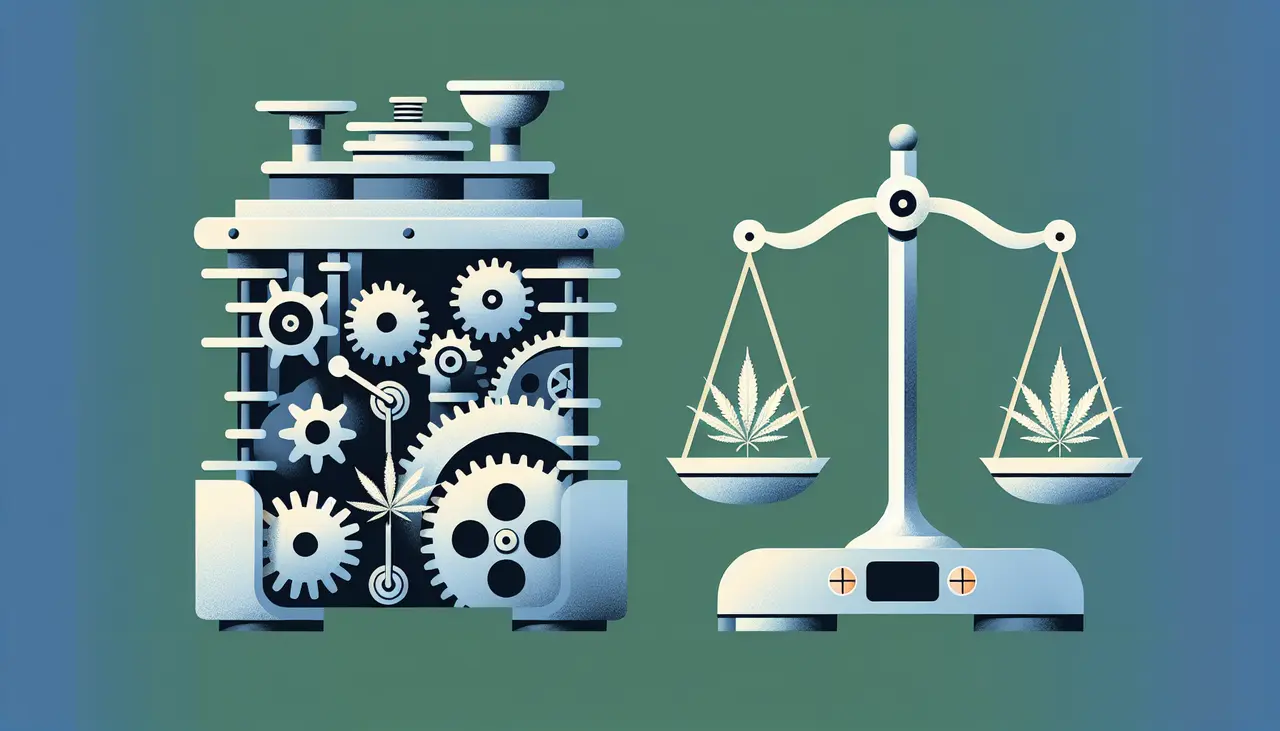In the ever-green world of cannabis, innovation and adaptability are key. Let’s explore how the gears of the cannabis industry equipment turn under the weight of new and changing regulations.
Understanding the Basics of Cannabis Industry Equipment
Cannabis industry equipment encompasses everything from the seeds you plant to the packaging you use for your final product. This foundation allows producers to cultivate, harvest, process, and sell cannabis products within the bounds of varying legal landscapes.
At its core, this machinery must ensure product consistency, quality, and compliance with health and safety regulations — a tall order given the industry’s rapid evolution and the patchwork of regulations across jurisdictions.
The key categories include cultivation equipment (like lighting and climate control systems), extraction machinery (essential for creating concentrates), product testing instruments (to verify quality and potency), and packaging technologies (critical for preserving freshness and ensuring child resistance).
The Impact of Regulations on Cannabis Equipment
New regulations can turn the cannabis industry on its head. As countries and states create and revise cannabis legislation, companies must swiftly adapt their equipment and operations to stay compliant. This means continuous investment in new technologies and sometimes, a complete overhaul of production lines.
One significant regulatory focus is on product safety and quality. For instance, changes in extraction regulations have pushed companies towards safer, more efficient methods like CO2 and ethanol extractions, which in turn require specific types of equipment.
Technological Innovations in Response to Regulatory Changes
Regulatory changes often serve as a catalyst for innovation within the cannabis industry. Manufacturers are constantly developing more sophisticated equipment to meet new standards, from precision agriculture tools that optimize growth and yield to advanced extraction machines which enhance purity and safety.
For example, the rise in demand for solventless cannabis products has led to the innovation of new extraction techniques, like rosin presses, which use heat and pressure to extract cannabinoids without the need for chemical solvents.
Case Studies: How Companies Adapted Their Equipment
Consider the story of a Colorado-based cannabis company that revamped its entire extraction line to comply with new state regulations on solvent use. Investing in cutting-edge CO2 extraction machines not only made them fully compliant but also increased their product quality and efficiency.
Another case is a California edibles manufacturer who had to quickly adapt to new packaging laws. They introduced child-resistant and tamper-evident packaging solutions, which required a new packaging line but also significantly improved product safety and consumer trust.
Future Trends in Cannabis Industry Equipment
As the legal landscape continues to evolve, so too will the technology behind cannabis industry equipment. Futuristic innovations like AI-driven cultivation systems and blockchain for traceability are on the horizon, promising to make compliance easier and production more efficient.
Looking ahead, there’s also a growing interest in sustainability within the industry. From energy-efficient lighting systems to eco-friendly packaging, companies are seeking ways to minimize their environmental footprint while complying with regulations.
The Resilient Future of Cannabis Industry Equipment
Navigating the labyrinth of regulations is no small feat, but as showcased, the cannabis industry’s resilience and ingenuity shine through. From advanced cultivation equipment to state-of-the-art extraction machines, the evolution driven by regulatory shifts not only ensures compliance but also propels the cannabis sector toward higher standards of quality and safety. As we continue to witness this remarkable adaptation, one thing remains clear: the future of cannabis industry equipment is as promising as it is exciting.




